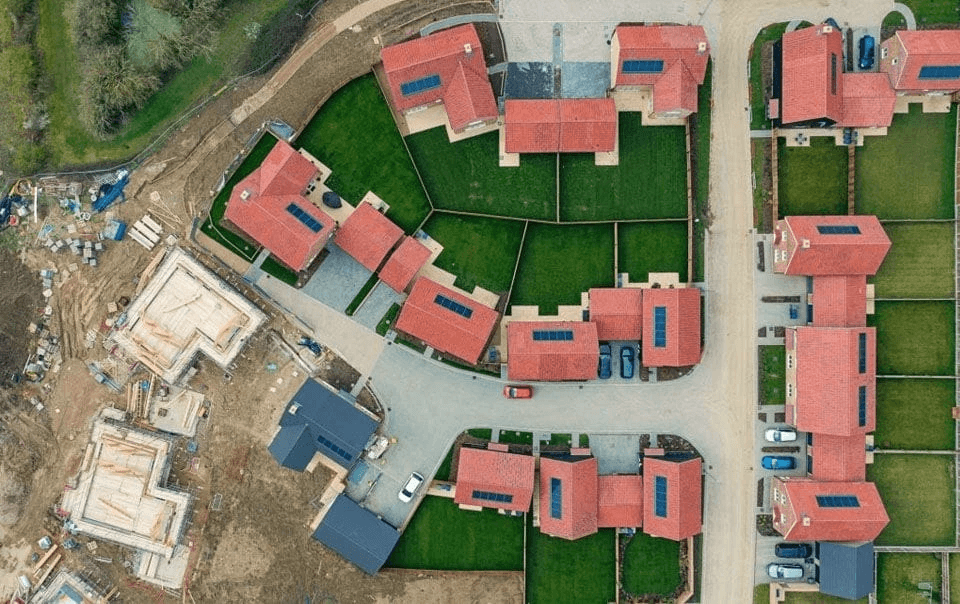What is Net Benefit for Biodiversity?
In Wales, the biodiversity net gain regime is termed “Net Benefit for Biodiversity” (NBB). While it has a similar intent to Biodiversity Net Gain (BNG) in England in delivering an overall improvement in biodiversity, NBB does not use a metric-based approach like BNG, which sets a baseline number of biodiversity units and requires developers to improve biodiversity by a minimum of 10%.
NBB supports a proactive approach to be taken by developers to biodiversity, wider ecosystem benefits, and resilience at the design stage. NBB applies to all development in Wales, even in cases where biodiversity value is being maintained rather than enhanced.
Unlike the quantitative approach of BNG for development in England, NBB takes a more site-specific and qualitative assessment based on the DECCA resilience attributes and the step-wise mitigation hierarchy.
Implementation via PPW 12th Edition
Paragraph 6.4. of PPW 12th Edition states that the planning system must ensure development results in a net benefit for biodiversity and ecosystem resilience to enhance well-being.
It defines a net benefit as development leaving “biodiversity and the resilience of ecosystems in a significantly better state than before, through securing immediate and long term, measurable and demonstrable benefit, primarily on or immediately adjacent to the site.”
Where adverse effects cannot be avoided, minimised, mitigated/restored, or compensated for as a last resort, planning permission will be refused (para. 6.4.4).
The onus is on the developer to demonstrate how their proposals will deliver a net benefit, including evidence of long-term site management and resources (6.4.8).
DECCA Framework
To assist in evaluating ecosystem resilience, Natural Resources Wales has developed the “DECCA Framework” based on five key attributes that planning authorities must consider under PPW 6.4.5:
- Diversity – Maintaining and enhancing diversity at all levels and scales
- Extent – Incorporating measures to maintain and increase semi-natural habitat area and linkages
- Condition – The condition affected by factors like climate change, invasive species, recreation, etc.
- Connectivity – Maintaining/creating links between and within habitats
- Aspects of resilience – The product of the above four attributes
Any proposed biodiversity enhancements must be appropriate to the local and national environment, considering strategic plans, local strategies, and evidence like area statements.
Ecologists need to take a “whole system approach” looking at the baseline biodiversity value and resilience of the entire site, its context in the wider landscape, and opportunities for enhancing resilience in line with the DECCA attributes.
Proportionate Enhancement
A key principle of NBB is that biodiversity enhancement should be proportionate to the scale and nature of the proposed development.
While this means small developments can more easily deliver net benefit, it also means planning permission may be refused if no enhancement is proposed as part of an application (PPW 6.4.12).
Even where biodiversity value has been maintained on a site, the policy at 6.4.16 states “there must still be a proactive process to look for and secure enhancement through the design and implementation of the development.” Hence, going above and beyond simple mitigation is essential.
Step-Wise Approach
PPW 6.4.15 outlines a step-wise approach that authorities will follow in assessing impacts on habitats and species using the DECCA resilience framework:
- Avoid impacts through considering alternative sites
- Minimise impacts through design
- Mitigate/restore any residual impacts on-site to build resilience
- Compensate off-site only as a last resort
- Provide a long-term management plan alongside steps 1-4 to achieve net benefit
- Refuse permission if steps 1-4 fail or no management plan provided
Thorough pre-application surveys and long-term management planning will be essential to support the step-wise approach.
Where sites are already allocated in plans, the step-wise approach may not be possible to follow sequentially when first reviewed, potentially requiring de-allocation.
Conclusion
Developers in Wales will need to be aware of NBB and the Section 6 Duty. This brings additional complexity and cost to the development process.
Following the DECCA ecosystem resilience principles and step-wise avoidance/mitigation approach needs to be a central consideration from the very start of the development planning process. Innovative solutions, partnership working, and an appreciation of cumulative impacts in the wider area will all help deliver biodiversity benefits.
Our Head of Environmental, Climate and Sustainability Law, Stephen Sykes, alongside expert Planning solicitor, Tom Jones, recently hosted the first of a series of webinars on BNG. To watch the webinar on-demand and gain legal insights into BNG and NBB, please click here.
If your firm requires assistance on NBB or BNG, please contact t.jones@capitallaw.co.uk.




